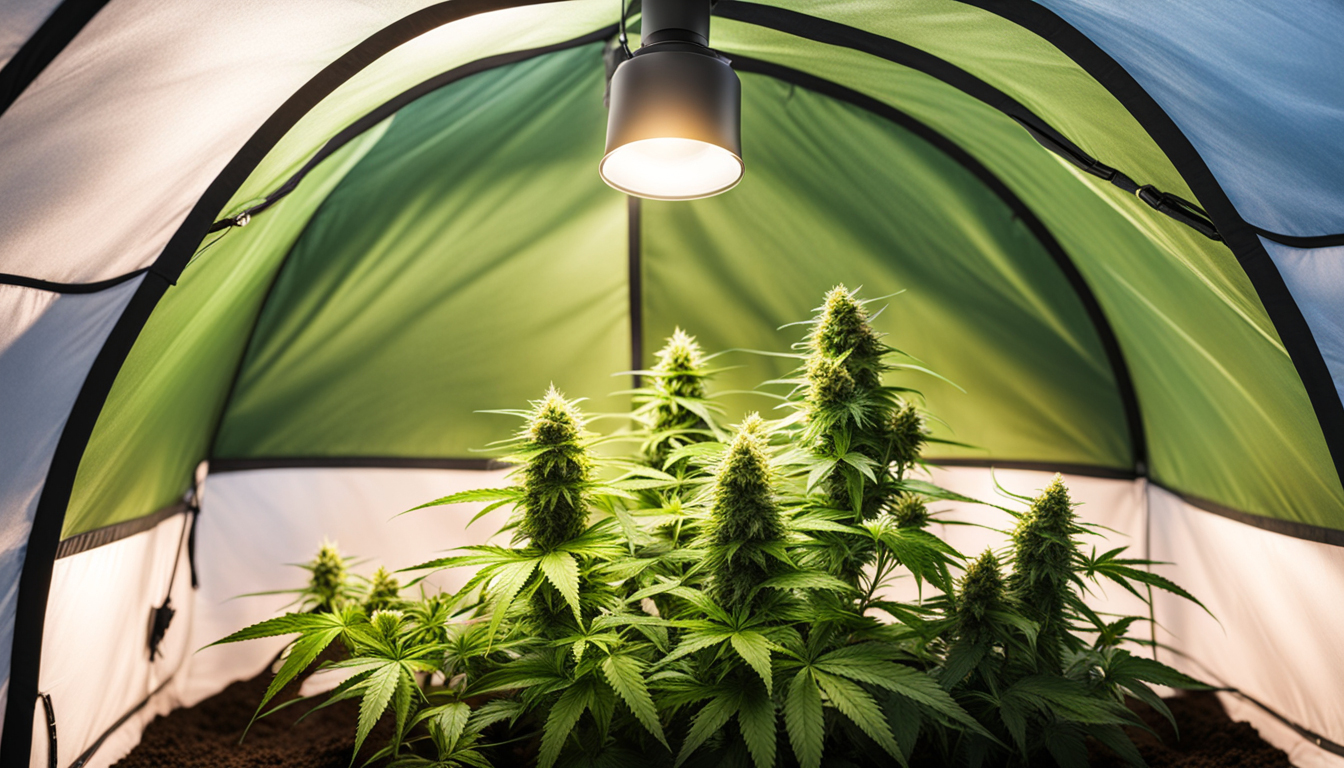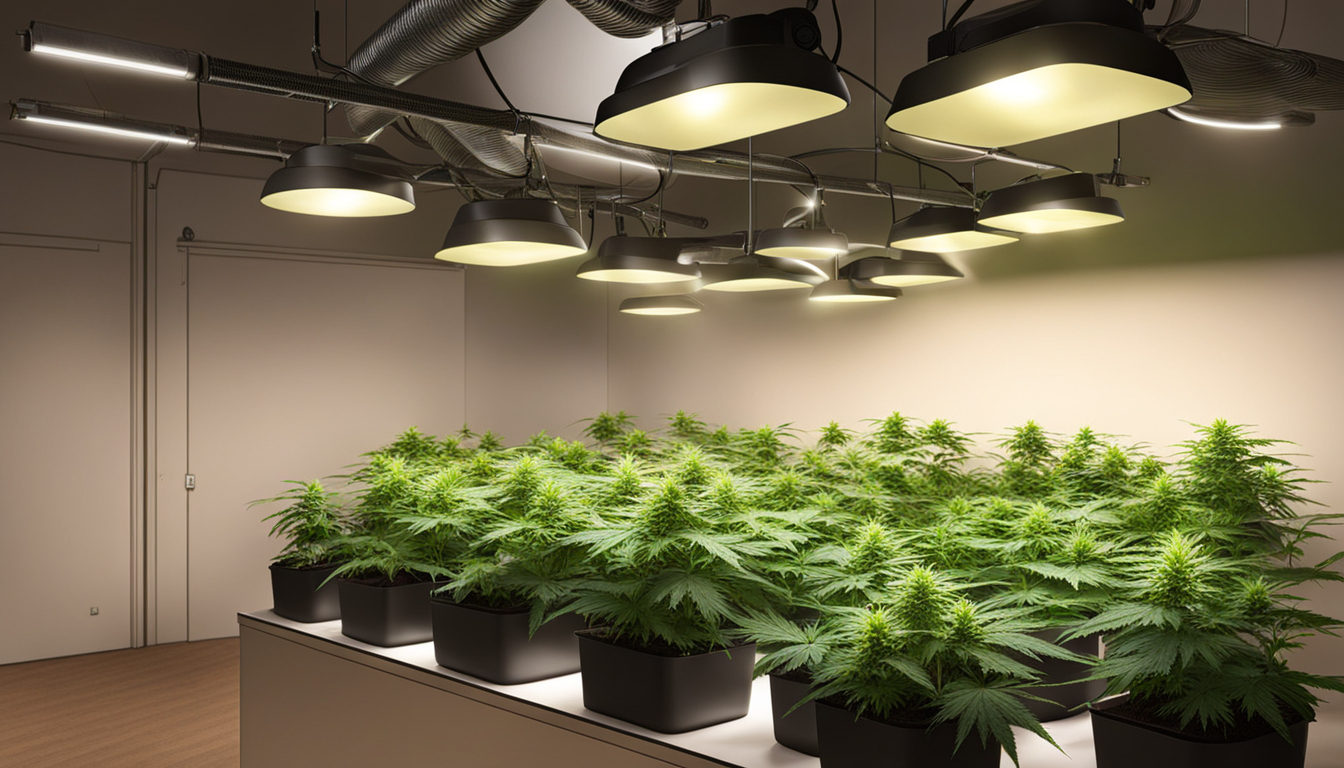
Whether you're new to weed cultivation or looking to improve your existing grow, following this complete guide will help you produce large, high-quality yields right at home. With the right supplies, strategies, and attention, growing weed indoors can be an extremely rewarding and cost-effective endeavor.
Choosing Pot Varieties
The first step in planning your indoor crop is picking the right cannabis cultivars to grow. The three main types of weed plants each have their own characteristics.
Energizing strains
Known for their uplifting intellectual effects, sativas grow tall and slender with narrow leaves. They flourish in hotter equatorial climates and have a longer blooming time between 2.5-3 months indoors. Top sativa strains include Sour Diesel, Durban Poison, and Jack Herer.
Relaxing strains
Indicas provide calming full-body effects and spread short and bushy with wide leaves. Adapted to colder mountain climates, they bloom faster within 2-2.25 months. Popular indica varieties include Northern Lights, Bubba Kush, and Bubba Kush.
Hybrids
Hybrid varieties blend traits from both energizing strains and relaxing strains. They offer combined effects and have medium blooming periods around 2.25-2.5 months. Popular mixes are OG Kush, Girl Scout Cookies, and Blue Dream.

Setting Up Your Cultivation Space
Weed plants need the right controlled environment to succeed. Key factors for indoor grows are lights, ventilation, layout, and finding the ideal discreet spot.
Location
Choose an unused space with quick access to water and electrical outlets. An empty spare room, large closet, basement corner, or cultivation tent locked away in a garage all make great discreet grow room spots.
Lights
Cannabis requires powerful light for all growth stages. LEDs are efficient and come in full spectrum options replicating natural sunlight. Provide 15-25 watts per sq. ft for the growth stage and 20-40 watts per sq. ft. for bloom.
Ventilation
Proper ventilation and exhaust systems keep ideal temperature, moisture, and pure CO2 levels. Install silent 10-15 cm fans or scrubbers to refresh stale air and reduce odors.
Layout
Maximize your space by positioning plants carefully under the lights and allowing room to reach and work around them. Set up separate zones for vegetation, bloom, curing, and cloning.

Cultivation Substrates
Cannabis can be grown in different mediums, each with benefits and cons. Pick a proper option for your specific setup and growing style.
Soil
The classic medium, soil is cheap and simple for new growers. It provides excellent flavor but requires more watering and fertilizing to nourish plants. Amend soil with perlite or coco to improve drainage.
Coconut coir
Made from coir, renewable coconut fiber holds water but still lets in air to the roots. It's more sterile and more consistent than soil. Use coir-specific nutrients to avoid calcium buildup.
Hydroponics
In hydro systems, plant roots grow directly in nutrient water solution. This allows rapid growth but needs close monitoring of solution chemistry. Deep water culture and irrigation systems are common techniques.
Germinating Seeds
Germination activates your weed seeds to begin sprouting taproots. This readies them for transplanting into their cultivation medium.
Paper Towel Method
Place seeds between moist paper towels and keep them moist. Check after 2-7 days for emerging radicles showing sprouting is complete.
Planting directly
Insert seeds right into pre-moistened growing medium 1⁄4 inch deep. Gently water and wait 1-2 weeks until sprouts push through the surface.
Rockwool Cubes
Soak cubic rockwool starters in balanced water. Place seeds 6mm deep into the cubes. Keep cubes wet until sprouts emerge within 1-14 days.
Transplanting Seedlings
Once germinated, pot young plants need to be repotted to avoid overcrowding. Move them into appropriately sized pots.
Ready Containers
Load final pots with growing medium enriched with time-released fertilizer. Allow containers to absorb water overnight before transplanting.
Gently repotting
Carefully separate seedling roots from germination medium using a spade. Put into prepared container at same depth as before and gently water in.
Growth Stage
The vegetative stage promotes foliage and plant form through 3/4 to full day of daily light intensity. This stage usually lasts 1-2 months.
Providing 18-24 Hours of Lighting
Use lamps on a 24 hour cycle or outdoor light to trigger nonstop growth. Light output influences height and internodal spacing.
Fertilizing
Use grow stage fertilizers higher in nitrogen. Make sure pH remains around 5.8-6.3 for proper fertilizer uptake. Feed 1⁄4 to 1⁄2 concentration after 14 days and increase gradually.
LST and topping
Topping, low stress training, and trellising direct growth shapes for flat foliage. This increases yields.

Bloom Stage
The flowering stage grows buds as plants show their sex under a 12/12 cycle schedule. It lasts 2-3 months depending on variety.
Changing Light Schedule
Change grow lights to 12/12 or move outside for natural 12 hour cycle. This signals plants to start blooming.
Stop Fertilizing
Leaching removes fertilizer residuals to improve taste. Feed weakly the first weeks then just use plain water the last 2 weeks.
Flushing
Continue 12 hour photoperiod but flush using pH-balanced water only. Return to plain watering if buds aren't yet mature after two weeks.
Reaping
Recognizing when weed is completely mature ensures grow cannabis fuide maximum potency and aroma. Harvest plants at optimal ripeness.
Identifying Ripeness
Check swollen calyxes, faded pistils, and 10-15% cloudy trichs. Check buds around the plant as they won't all ripen evenly.
Harvesting plants
Use sterilized, razor-sharp pruning shears to gently cut each plant at the base. Keep 5-10cm of stem attached.
Curing
Suspend whole plants or branches inverted in a dark room with average temp and RH around 50-60% for 7-14 days.
Aging
Curing continues desiccating while improving the buds like fine wine. This technique mellows harshness and further develops terpene contents.
Jars and Humidity
Trim cured buds from branches and place into glass jars, packing about 3⁄4 full. Use a hygrometer to monitor jar humidity.
Opening jars daily
Unseal jars for a few hours each day to gradually reduce humidity. Remoisten buds if RH goes under 55%.
Final Cure
After 2-3 weeks when moisture levels off around 55-60%, perform a final manicure and keep forever in sealed jars.
Common Problems and Solutions
Even experienced cultivators run into different cannabis plant problems. Identify issues soon and fix them correctly to keep a healthy garden.
Poor feeding
Chlorosis often signify insufficient nitrogen. Purpling stems and leaves show low phosphorus. Test pH and boost fertilizers slowly.
Pests
Spider mites, fungus gnats, thrips, and root aphids are frequent marijuana pests. Use organic sprays, predator bugs, and sticky traps for natural control.
Mold
High humidity encourages botrytis and root rot. Increase circulation and venting while reducing RH under 50% during bloom.

Conclusion
With this complete indoor cannabis cultivation guide, you now have the info to grow bountiful strong buds for private grows. Follow these steps and techniques during the germination, growth, and flowering stages. Invest in quality equipment and closely check on your plants. In time, you'll be compensated with frosty aromatic buds you raised yourself under the patient guidance of your green hands. Happy growing